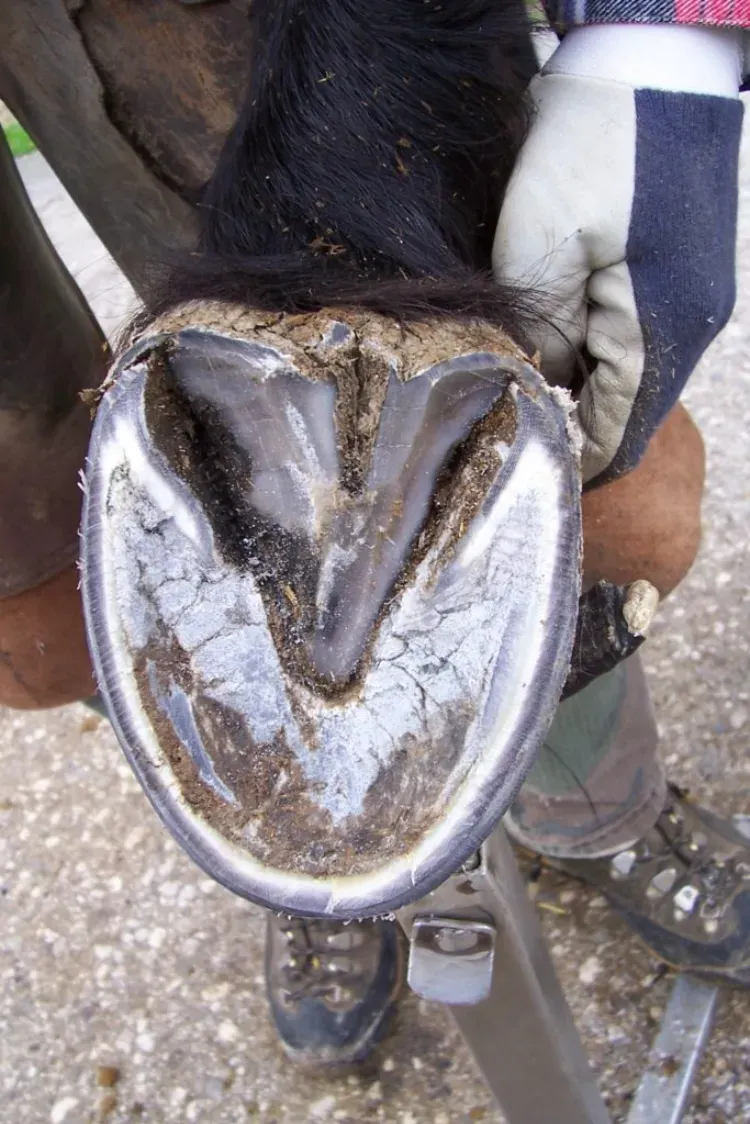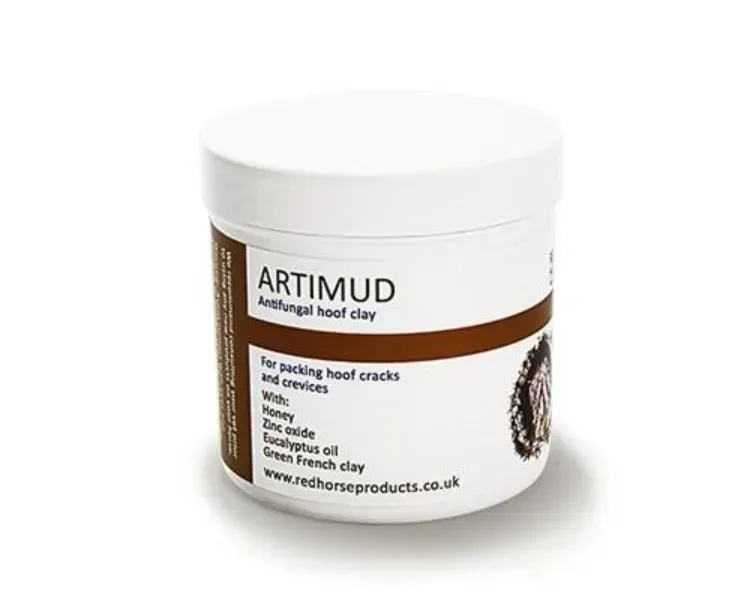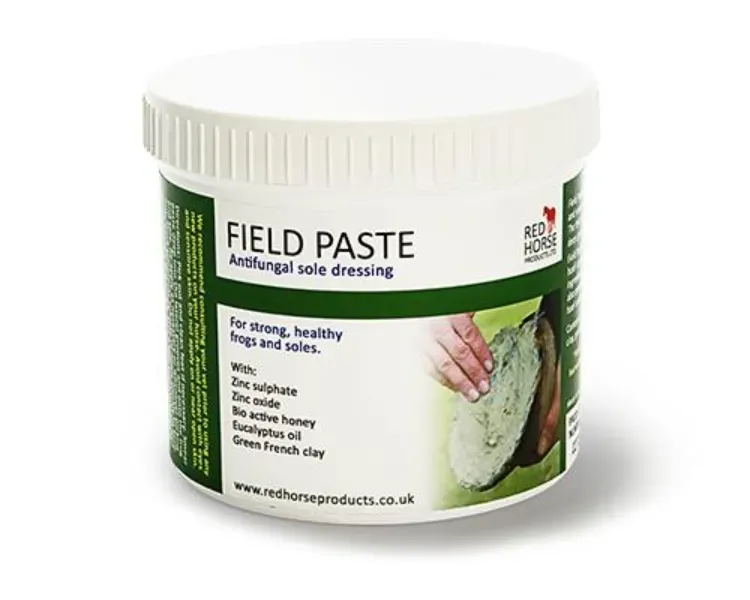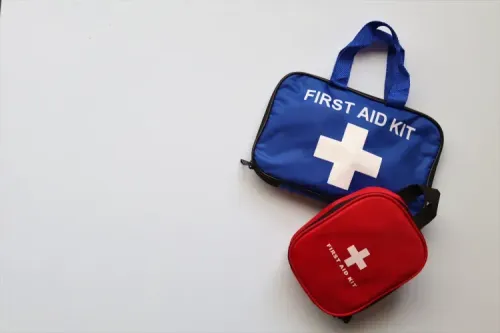
How do I tell if a horse hoof is infected?
A bacterial infection in a horse's frog is called thrush and this has a strong cheesy smell. The thrush will be eroded and black and in addition, there may be a sore and deep fissure in the central part of the frog.
An infection in the white line area is detected by the eroding away of the white line which also turns black, but the strong smell of thrush is not evident. There will be some separation of the white line from the hoof wall.
Remember, puncture wounds to the horse's sole must be considered as serious
In this article, I won't be talking about infections caused by puncture wounds to the sole. Treat puncture wounds as serious and seek both veterinary and farriery support for this type of injury.
Where are these foot infections found?
The frog is the triangular spongy area of the sole and it acts as a shock absorber. The white line runs around the inside of the hoof wall and looks white next to a black hoof wall. It is not so easily identified if your horse's hoof walls are white.

What does thrush look like?
The left part of the frog has more of an infection than the right side and the central part is infected with a deep fissure. The white line is not showing signs of an infection.
How to clear up horse hoof infections
Don't worry if your horse is prone to sole infections of the frog or white line as this post is about two Red Horse foot products that will solve your horse's foot problems. These products are Artimud and Field Paste Antifungal Sole Dressing and they are for the treatment of bacterial and fungal foot infections. The pros and cons of each product are considered and two case studies are given to show how the products are used.

Artimud
Artimud is a hoof clay with a thick, putty consistency and it contains honey, zinc oxide, and green French clay.
Artimud is used to eliminate bacteria and fungi within the foot.
The Pros:
- It can be applied under shoes to pack out any white-line separation and will remain in place.
- Zinc oxide and honey are very effective at killing bacterial and fungal infections.
- It is suitable for unshod stabled horses.
The Cons:
- It is not suitable for unshod horses that are turned out as the product will not stay in place under these conditions.
- This is particularly so in wet and muddy fields.

Field Paste Antifungal Sole Dressing
Field Paste Sole Dressing is for horses with thrush. The product contains zinc sulfate, zinc oxide, bioactive honey, eucalyptus oil, and green french clay.
Just like Artimud, the ingredients are all-natural and also eliminate bacterial and fungal foot infections. Field paste is thick and sticks to the sole for a good length of time.
The Pros:
- The product is for horses that mainly live out and it will stick to the sole for a good length of time.
- It is highly effective at killing bacterial and fungal infections.
The Cons:
- It is not suited to stabled horses as the bedding sticks to the product.
- It is very messy to apply so you will need to wear gloves.
White line separation and infection in the foot can be serious.
White line separation and infection in the foot can be an indication of laminitis. So always check out the cause of this problem or else you will not have a solution.
Case Study 1:
An unshod youngster who lives out in the daytime but comes in for stabling in the early evening.
This horse developed a bit of white line separation in both front feet caused by tiny pieces of driveway gravel that wedged in the white line area to cause a mechanical separation from the hoof wall. This caused a small bacterial infection, aggravated by muddy winter conditions.
The solution for this horse
Every evening I used a stiff wire brush to clean out any debris and applied a wedge of artimud, which I worked well into the white line area. In the morning I re-clean the white line area and apply field paste before turning the horse out. I repeated this process for a total of 4 days. From that point onwards the horse’s feet were carefully inspected daily and both products were periodically used as required.
Later, when this horse had shoes the problem disappeared but as a precaution artimud was smeared on the white line area before the shoes were set.
Case Study 2:
A horse arrived in the yard with deep frogs that were badly infected with thrush. The poor horse was sore and uncomfortable.
The solution for this horse
The infected area was probed and opened up. It was packed with crushed copper sulfate crystals. Field paste was packed on top of this to hold it all in place and as an additional treatment. The horse was turned out to graze for the day and In the evening the frogs were re-cleaned and again packed with copper sulfate crystals.
This process continued for two weeks and then the infection disappeared. Artimud was less effective when packing out the deep infection in the cleft of the frog, hence the use of copper sulfate crystals.
Copper Sulfate Crystals
Copper sulfate crystals are not easily obtained but they will effectively kill an anaerobic bacterial infection in the deep area of the cleft of the frog.
Conclusions
Use Artimud and Field Paste Antifungal Sole Dressing to treat frog and white line Infections. Both products have a residency on my tack room shelf and are a “go-to” for stabled horses and those on the grass with these infections. Copper sulfate crystals are used for deep infections in the frog as they are more easily worked into this area of the sole.

Article Suggestion
Horse First Aid Kit: How to Construct a Comprehensive Equine First Aid Kit
